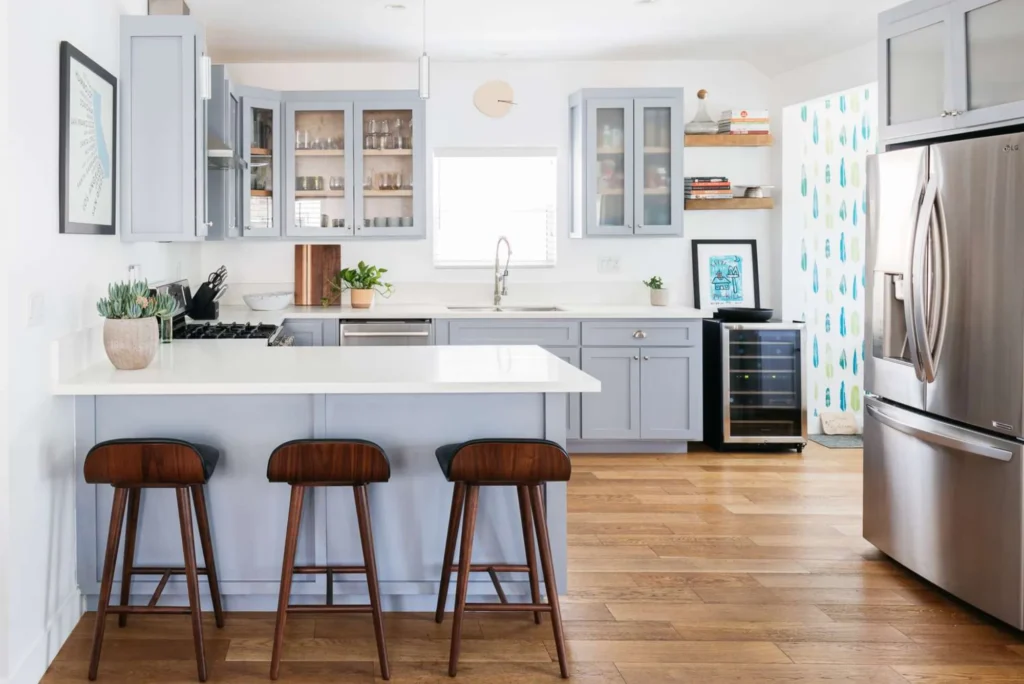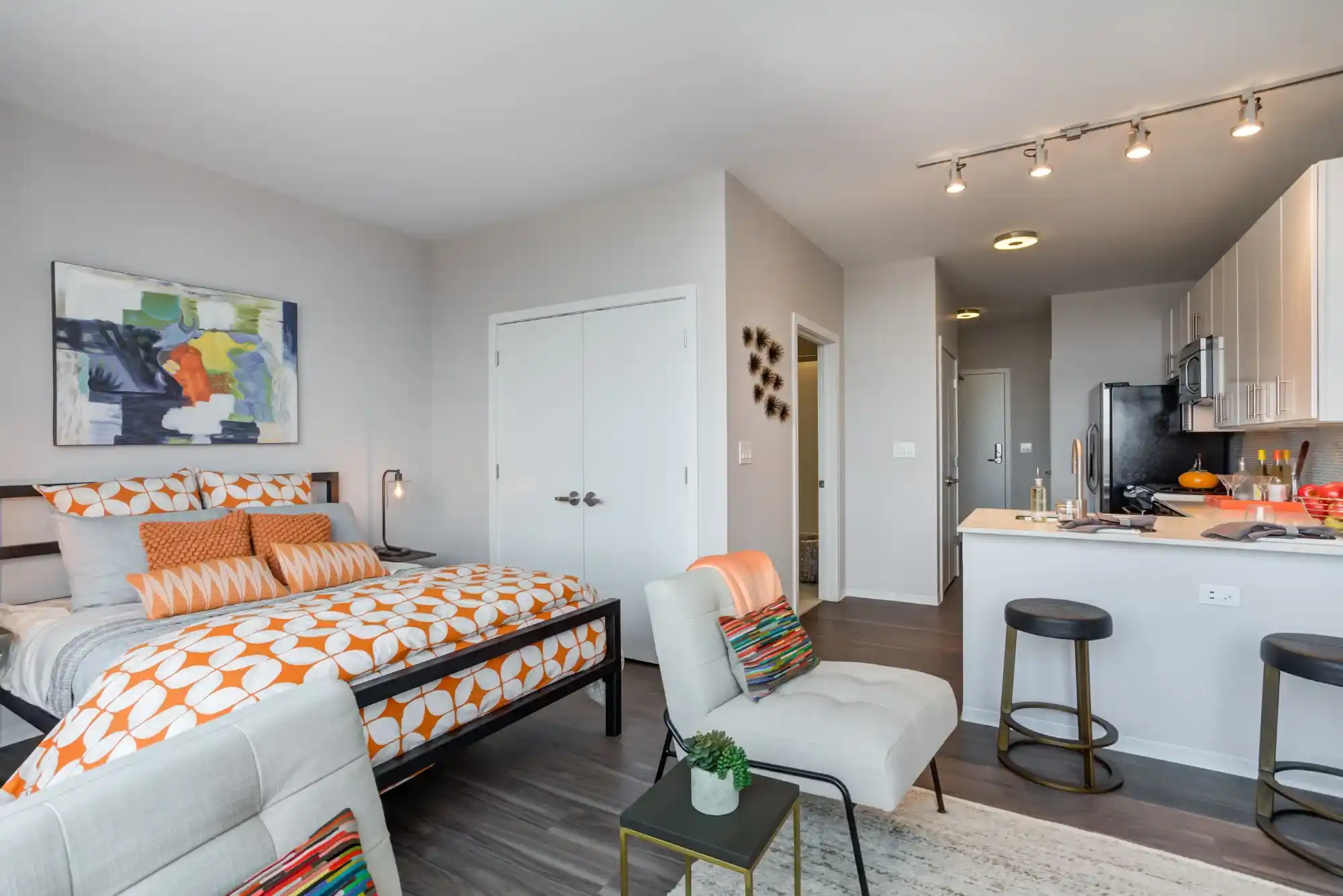A 10×12 kitchen is a popular size for many homes, offering a balanced space that can be both functional and stylish. With these dimensions, you have enough room to incorporate various design elements, including an island, which can significantly enhance the functionality and aesthetic appeal of the space.
The Role of an Island in a 10×12 Kitchen
Functionality
An island serves multiple purposes in a kitchen. It provides additional counter space for meal preparation, serves as a casual dining area, and offers extra storage options. In a 10×12 kitchen, an island can act as a focal point while optimizing the layout for better efficiency.
Design Considerations
When integrating an island into a 10×12 kitchen, it’s crucial to ensure it complements the overall layout. The island should be proportional to the space, allowing for easy movement around it. Proper planning helps maintain a smooth workflow and prevents the kitchen from feeling cramped.
Popular Design Styles for 10×12 Kitchens with Islands
Modern Minimalist
Modern minimalist kitchens focus on clean lines and a clutter-free appearance. Islands in this style typically feature sleek, straight edges and simple designs. Materials like quartz or stainless steel are often used for a contemporary look, emphasizing functionality and style without unnecessary embellishments.
Classic Traditional
Traditional kitchens are characterized by their detailed cabinetry and warm, inviting elements. An island in this style may include features like built-in sinks or stoves and classic cabinetry. The design often incorporates rich wood finishes and intricate moldings, creating a timeless and elegant look.
Farmhouse Charm
Farmhouse kitchens exude a rustic and cozy atmosphere. Islands in farmhouse designs are often larger and can include features like open shelving and farmhouse sinks. The use of reclaimed wood or painted finishes adds to the charm and practicality, making the kitchen both functional and welcoming.
Contemporary Chic
Contemporary chic kitchens embrace bold colors and innovative materials. Islands in this style might have unique shapes and eye-catching finishes, such as marble countertops or colorful cabinetry. This style focuses on blending modern aesthetics with functionality, creating a dynamic and stylish kitchen space.
Layout Configurations
Single Island Layout
A single island layout is ideal for maximizing space efficiency in a 10×12 kitchen. It provides a central hub for cooking and entertaining without overwhelming the room. This layout is particularly effective in kitchens where the island can be utilized for both preparation and casual dining.
U-Shaped Layout
Incorporating an island into a U-shaped kitchen layout can enhance functionality and flow. The island becomes a central workspace, while the U-shaped counters provide additional storage and preparation areas. This configuration allows for efficient use of space and improves accessibility.
L-Shaped Layout
An L-shaped kitchen layout with an island integrates the island into one leg of the L-shape. This setup offers an open and spacious feel, with the island serving as a versatile element for cooking, eating, or storage. It’s an effective way to enhance a kitchen’s functionality while maintaining an open layout.
Galley Layout
A galley kitchen with an island can be a space-saving solution that maximizes efficiency. The island can provide extra counter space and storage, while the parallel counters ensure that everything is within reach. This layout is perfect for smaller kitchens where every inch counts.
Choosing the Right Island Design
Size and Proportions
Selecting the right size for your island is crucial in a 10×12 kitchen. The island should be proportionate to the space, ensuring that it doesn’t obstruct traffic flow. Ideally, there should be at least 42-48 inches of clearance around the island for comfortable movement.
Shape and Style
Islands come in various shapes, including rectangular, square, and round. The shape you choose should complement the overall kitchen design. Rectangular islands are common and functional, while round or unique shapes can add a distinctive touch to your kitchen’s appearance.
Materials and Finishes
The choice of materials for your island’s countertop and base significantly impacts the kitchen’s look and feel. Popular options include granite, quartz, and marble for countertops, while the base can be made from wood, metal, or a combination of materials. Choose finishes that align with your kitchen’s style and your personal preferences.
Practical Considerations
Lighting
Proper lighting is essential for both functionality and aesthetics. Pendant lights above the island provide focused illumination for tasks and add visual interest. Recessed lighting can be used to complement the pendant lights and ensure the entire kitchen is well-lit.
Seating Options
Deciding on seating for your island depends on how you plan to use the space. Bar stools are a popular choice for casual dining, while integrated seating can create a more cohesive look. Ensure there’s enough space for comfortable seating without crowding the kitchen.
Storage Solutions
Islands can offer a variety of storage options, including cabinets, drawers, and open shelving. Maximize storage by incorporating features that suit your needs, such as deep drawers for pots and pans or pull-out shelves for easy access.
Common Mistakes to Avoid
Overcrowding the Island
Avoid making the island too large or cluttered, as this can disrupt the kitchen’s flow and functionality. Ensure that the island is balanced with the rest of the kitchen’s layout to maintain a comfortable and practical workspace.
Ignoring Traffic Flow
Ensure that there’s sufficient space around the island for easy movement. A well-designed kitchen allows for smooth traffic flow, preventing the island from becoming a hindrance to everyday activities.
Neglecting Lighting
Inadequate lighting can impact both the functionality and ambiance of the kitchen. Ensure that the island is well-lit to enhance its usability and contribute to the overall kitchen design.
Inspirational Examples
Case Studies
Explore real-life examples of 10×12 kitchens with islands to gain inspiration and ideas. Before-and-after photos and design transformations can provide valuable insights into how different island designs and layouts can be implemented effectively.
Budgeting and Cost Considerations
Average Costs
The cost of adding an island to a kitchen varies based on size, materials, and design complexity. On average, kitchen islands can range from a few hundred to several thousand dollars. Consider your budget and prioritize features that offer the best value for your needs.
Cost-saving Tips
To stay within budget, consider cost-saving options such as DIY projects or selecting more affordable materials. Planning and researching can help you find budget-friendly solutions without compromising on style or functionality.
Summary of Key Points
Integrating an island into a 10×12 kitchen can significantly enhance both its functionality and aesthetic appeal. By choosing the right design, layout, and materials, you can create a kitchen that is both practical and stylish.
Final Thoughts
Exploring various designs and consulting with professionals can help you achieve the perfect kitchen island for your space. Whether you prefer a modern minimalist look or a classic traditional style, an island can be a valuable addition to your kitchen.











